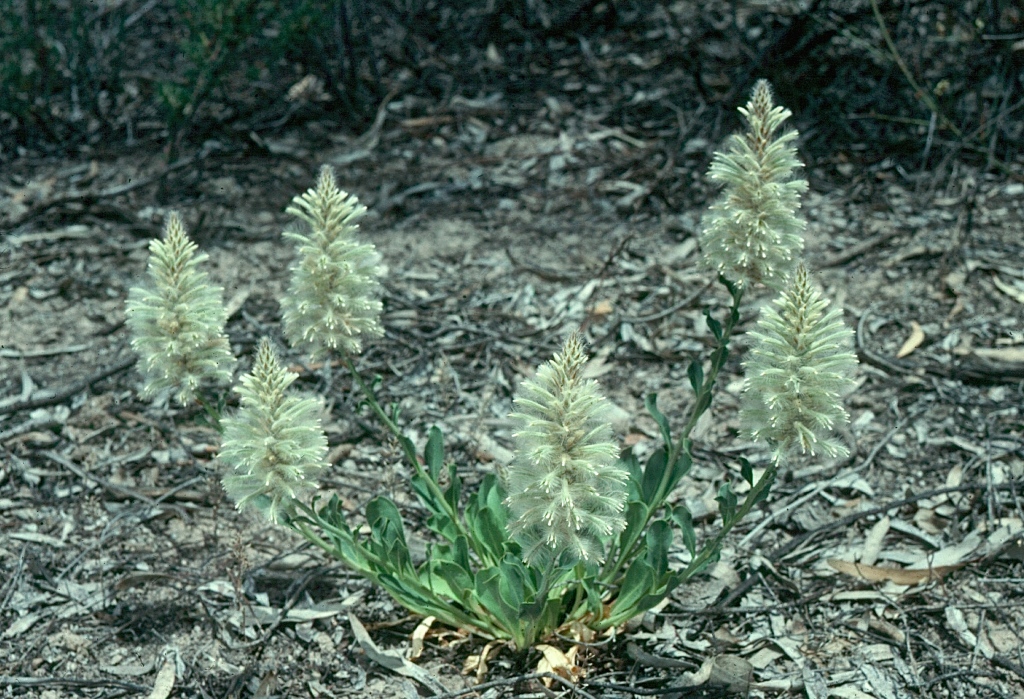Ptilotus nobilis
(Lindl.) F.Muell.Deeply taprooted herb with several stout, erect, simple branches to c. 40 cm high. Stems glabrous. Basal leaves obovate to oblanceolate, 5–14 cm long, 1–3.5 cm wide, glabrous, thick; stem leaves similar but smaller. Spike erect, cylindric, 5–12 cm long, 4–5 cm diam., dense, yellow-green; bract ovate, c. 1 cm long, acute or acuminate with mucro 0.5–1 mm long; bracteoles similar to bract; perianth 20–25 mm long; tepals united at base into a hardened cup c. 2 mm long, otherwise free, outer surface with long, silky hairs in the distal half, overlying a denser layer of short barbed hairs that extend to the base (where slightly longer), inner surface glabrous except for a loose woolly tuft at base; fertile stamens 3 or 4; ovary supported on stipe as long as basal cup of perianth, sparsely pubescent at summit, style virtually central, slightly sigmoidal, 16–20 mm long. Flowers Aug.–Dec.
LoM, MuM, Wim, VVP, VRiv, MSB, RobP, MuF, Gold, NIS. All mainland States. Apparently very rare in Victoria and apparently confined to Eucalyptus largiflorens woodlands and chenopod shrublands on clayey soils on the Murray River floodplain from near Red Cliffs to near the South Australian border. Sometimes locally abundant following good rains or floods.
A study by Lee et al. (2007) united P. nobilis and P. exaltatus on molecular grounds, but a morphological and ecological investigation by Hammer et al. (2018) separated the two species. In Victoria at least, the two species are readily distinguishable and are maintained here.
 Spinning
SpinningHammer, T.A.; Macintyre, P.D.; Nge, F.J.; Davis, R.W.; Mucina, L.; Thiele, K.R. (2018). The noble and the exalted: a multidisciplinary approach to resolving a taxonomic controversy within Ptilotus (Amaranthaceae). . Australian Systematic Botany 31(3): 273, 274.
Lee, K.K.; Johnstone, M.E.; Harrison, D.K.; Williams, R.R. (2007). Molecular taxonomic clarification of Ptilotus exaltatus and Ptilotus nobilis (Amaranthaceae). Australian Systematic Botany 20: 72–81.



